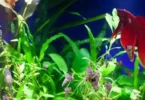Welcome to our comprehensive guide on Platy Fish care for aquarium enthusiasts! Platy fish, scientifically known as Xiphophorus maculatus, are a popular choice among hobbyists due to their vibrant colors, peaceful nature, and ease of care. In this guide, we will walk you through all the essential aspects of Platy fish care, from setting up the perfect aquarium environment to maintaining their health and well-being. Let’s dive in!
Choosing the Right Aquarium for Platy Fish
Optimal Tank Size for Platies: Selecting the right aquarium size is crucial for the well-being of your Platies. We recommend a tank capacity of at least 10 gallons for a small community of Platies. If you plan to house more fish or include other species, opt for a larger tank to ensure ample space and maintain water quality.
Filtration System: Platies thrive in well-filtered water, so invest in a high-quality filtration system suitable for your tank size. An efficient filter will remove toxins, and excess waste, and maintain water clarity, ensuring a healthier environment for your fish.
Creating the Perfect Habitat for Platy Fish
Substrate Selection: Platies enjoy a tank with a sandy or fine-grain gravel substrate, resembling their natural habitat. A substrate that allows for easy burrowing and promotes the growth of beneficial bacteria is ideal.
Plants and Decorations: Add live or artificial aquatic plants and decorations to create hiding spots and mimic their natural environment. This will reduce stress and promote exploration among your Platies.
Water Conditions and Maintenance for Platy of Fish
Temperature and pH: Platies prefer a water temperature between 72°F to 78°F (22°C to 26°C) and a slightly alkaline pH range of 7.0 to 8.2. Use a reliable aquarium thermometer and pH testing kit to monitor and adjust water conditions accordingly.
Regular Water Changes: Perform routine water changes of 20-25% every two weeks to remove accumulated toxins and maintain water quality. This will promote the overall well-being of your Platies and prevent common health issues.
Platy Fish: Feeding and Nutrition
Balanced Diet: Offer a diverse diet to ensure your Platies receive all the essential nutrients. High-quality flake food, supplemented with occasional treats like frozen or live foods such as brine shrimp, daphnia, or bloodworms, will keep your Platies healthy and vibrant.
Feeding Schedule: Establish a consistent feeding schedule and avoid overfeeding, as it can lead to water quality problems. Feed your Platies small portions 2-3 times a day, only giving them what they can consume within a few minutes.
Platies and Tank Mates
Peaceful Community Fish: Platy fishes are peaceful and social fish, making them great additions to community aquariums. Compatible tank mates include other peaceful species like Guppies, Corydoras catfish, and Tetras. However, avoid aggressive or fin-nipping species.
Breeding and Fry Care
Breeding Behavior: Platies are prolific breeders, and understanding their breeding behavior is crucial. Provide hiding spots with dense vegetation for pregnant females to give birth in a stress-free environment.
Fry Care: Once the fry is born, consider transferring them to a separate breeding or nursery tank to protect them from potential predation. Feed the fry with specialized baby fish food to support their growth and development.
Platy Fish: Common Health Issues and Care Tips
Platy fish are generally hardy, but like any living creature, they can be susceptible to certain health issues. The most common problems include fin rot, ich, and fungal infections. Ensuring a clean and stable environment, a balanced diet, and regular monitoring will go a long way toward keeping your Platies healthy.
Platy fish are popular aquarium pets known for their vibrant colors and ease of care. However, like all fish, they can be susceptible to various health issues. Here are some common health problems that platy fish may encounter and tips on how to care for them:
1. Ich (White Spot Disease):
- Symptoms: White cyst-like spots on the fish’s body, clamped fins, rubbing against objects.
- Treatment: Raise the tank temperature to around 82-86°F (28-30°C) and add a commercial ich medication. Quarantine affected fish to prevent the spread.
2. Fin Rot:
- Symptoms: Torn or frayed fins, discoloration, lethargy.
- Treatment: Improve water quality through regular water changes. Use antibiotics if the infection is severe.
3. Dropsy:
- Symptoms: Bloated appearance, scales protruding, loss of appetite, lethargy.
- Treatment: Isolate the affected fish, maintain excellent water quality, and consider using antibiotic medication.
4. Swim Bladder Disorder:
- Symptoms: Difficulty swimming upright, floating at the surface, sinking to the bottom.
- Treatment: Feed a diet of high-fiber foods like peas, and ensure the water quality is optimal. Isolate the affected fish if necessary.
5. Poor Water Quality:
- Symptoms: Lethargy, loss of appetite, color loss.
- Prevention: Regularly test and maintain proper water parameters (pH, ammonia, nitrite, and nitrate levels). Perform water changes to keep the water clean and healthy.
6. Overcrowding:
- Symptoms: Stress-related issues, and increased aggression.
- Prevention: Avoid overstocking your aquarium. Provide adequate space for each platyfish, usually around 2-3 gallons per fish.
7. Unbalanced Diet:
- Symptoms: Malnutrition, faded colors.
- Prevention: Feed a varied diet of high-quality flake, pellet, and occasional live or frozen foods to ensure they receive essential nutrients.
8. Stress:
- Symptoms: Decreased immunity, and increased susceptibility to diseases.
- Prevention: Maintain a stable environment with appropriate water parameters, decorations, and hiding spots. Minimize sudden changes in lighting or temperature.
9. Parasitic Infections:
- Symptoms: Scratching against objects, rapid gill movement, visible parasites.
- Treatment: Identify the specific parasite and treat it accordingly with a suitable anti-parasitic medication.
10. Breeding Complications:
- Symptoms: Female platy fish having difficulty giving birth, stillbirths.
- Prevention: Provide plenty of hiding places for fry, separate pregnant females if necessary, and maintain good water conditions.
Regular observation, proper nutrition, and a clean aquarium are crucial for preventing many of these health issues in platy fish. Quarantining new fish before introducing them to your main tank can also help prevent the spread of diseases. If you notice any signs of illness, it’s essential to take action promptly to ensure the health and well-being of your platy fish. Consulting with a knowledgeable aquarium hobbyist or veterinarian can be beneficial if you’re unsure about diagnosis or treatment.
Conclusion
Congratulations! You are now equipped with the knowledge to create the perfect environment for your Platies to thrive and flourish. Remember to maintain consistent water quality, offer a varied and balanced diet, and provide a harmonious community for your fish. By following these guidelines, you are well on your way to becoming a successful Platy keeper, providing your aquatic companions with a happy and healthy life. Happy fish keeping!
Frequently Asked Questions (FAQs)
Are Platies aggressive towards other fish in the tank?
Platies are generally peaceful and get along well with other non-aggressive species. However, they may occasionally show territorial behavior, especially during breeding.
Can I keep male and female Platies together in the same tank?
Yes, keeping a mix of male and female Platies is recommended if you wish to breed them. However, be prepared for potential population growth.
How often should I feed my Platies?
Feed your Platies small amounts of food two to three times a day. Overfeeding can lead to water quality issues.
Can I keep Platies in a community tank with other fish?
Absolutely! Platies are excellent community fish and can coexist peacefully with other non-aggressive species.
Do Platies require a heater in their tank?
Platies are tropical fish and prefer warm water. It’s best to use a heater to maintain a stable and suitable temperature for them.
Disclaimer: The information provided in this guide is based on general Platy care practices. Individual fish may have specific needs and requirements. Always observe your fish closely and consult with a professional if any health concerns arise.







Leave a Comment
You must be logged in to post a comment.